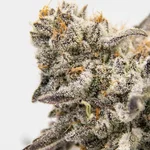Medical marijuana is a controversial topic that has been gaining more attention in recent years. With the legalization of cannabis in many states, there has been a growing interest in the medical benefits of marijuana. However, there is still a lot of confusion and misconceptions surrounding this topic. In this essay, we will explore what medical marijuana is, its benefits and risks, and how it is used.
Understanding Medical Marijuana
What is Medical Marijuana?
Medical marijuana refers to the use of cannabis and its cannabinoids for medicinal purposes. Cannabis contains more than 100 cannabinoids, including THC (tetrahydrocannabinol) and CBD (cannabidiol). THC is the psychoactive compound that gives users a “high,” while CBD is non-psychoactive and has been shown to have various medicinal benefits.
How is Medical Marijuana Different from Recreational Marijuana?
While both medical and recreational marijuana come from the same plant, there are some key differences. Medical marijuana is grown specifically for its medicinal properties and is prescribed by a doctor. Recreational marijuana, on the other hand, is used for its psychoactive effects and is not prescribed by a doctor.
How is Medical Marijuana Administered?
Medical marijuana can be administered in a variety of ways, including smoking, vaporizing, edibles, tinctures, and topicals. The method of administration depends on the patient’s condition and preferences.
The Benefits of Medical Marijuana
Pain Relief
One of the most well-known benefits of medical marijuana is its ability to relieve pain. Cannabis has been shown to be effective in treating chronic pain, neuropathic pain, and spasticity.
Anxiety and Depression
Medical marijuana has also been shown to be effective in treating anxiety and depression. CBD has been shown to have antidepressant and anxiolytic effects, and THC can help reduce anxiety and improve mood.
Reducing Inflammation
Medical marijuana has anti-inflammatory properties, making it effective in treating conditions such as arthritis, Crohn’s disease, and multiple sclerosis.
Reducing Nausea and Vomiting
Medical marijuana can also help reduce nausea and vomiting in patients undergoing chemotherapy.
Epilepsy
Medical marijuana has been shown to be effective in treating epilepsy, particularly in children with Dravet syndrome and Lennox-Gastaut syndrome.
The Risks of Medical Marijuana
Addiction
While medical marijuana is not as addictive as opioids, it can still be habit-forming. Patients should be monitored closely to avoid addiction.
Impaired Driving
Marijuana can impair driving ability, which can be dangerous for patients who use it.
Psychosis
In some cases, marijuana use can lead to psychosis, particularly in patients with a history of mental illness.
Side Effects
Like any medication, medical marijuana can cause side effects such as dizziness, dry mouth, and fatigue.
How Medical Marijuana is Used
Getting a Prescription
In order to use medical marijuana, patients must get a prescription from a doctor. The doctor will determine the appropriate dosage and method of administration.
Dispensaries
Medical marijuana can be obtained from dispensaries in states where it is legal. Dispensaries offer a variety of strains and products, and staff can help patients choose the right product for their condition.
Growing Your Own
In some states, patients are allowed to grow their own medical marijuana. This can be a cost-effective option for patients who use it regularly.
In conclusion, medical marijuana has many potential benefits for patients with a variety of conditions. However, it is important to understand the risks and to use it under the guidance of a doctor. With more research being conducted on the medicinal properties of cannabis, we can expect to learn even more about its potential benefits in the future.












